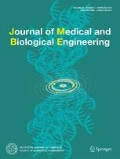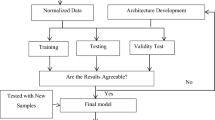Abstract
Early detection of liver disease is never easy, though it is one of the most important diseases on earth. This study, thus, attempts to achieve efficient early detection through a Multilayer Perceptron Neural Network (MLPNN) algorithm based on various decision tree algorithms such as See5 (C5.0), Chi square Automatic interaction detector (CHAID) and classification and regression tree (CART) with boosting technique. Five hundred and eighty-three records related to the Indian Liver Patient Dataset (ILPD) were collected from University of California, Irvine (UCI) repository dataset for the verification of the proposed work. The ILPD dataset is divided into 70% for the training stage and 30% for the testing stage. Several evaluation metrics, such as specificity, sensitivity, precision, false positive rate (FPR), false negative rate (FNR), F1, and accuracy, are applied in this study. These metrics are carried out in two phrases. In the first experiment, we observed that B-C5.0 method presents better performance than B-CHAID and B-CART methods. In the second experiment, a hybridization of B-C5.0 and MLPNN methods, namely MLPNNB-C5.0, indicates the highest rates of detection of liver disease compared to other algorithms. Results indicate that MLPNNB-CHAID method has the most innovative accuracy with a value of 14.57%. The proposed method is able to diagnose and classify the liver disease efficiently. We would argue that the proposed system can be useful as a medical data mining approach in order to provide an early diagnosis of liver disease.







Similar content being viewed by others
References
Colak, C., Karaman, E., & Turtay, M. G. (2015). Application of knowledge discovery process on the prediction of stroke. Computer Methods and Programs in Biomedicine, 119(3), 181–185.
Lin, C. H., Tseng, P. H., Huang, L. C., Oyang, Y. J., Wu, M. S., & Chou, S. C. T. (2013). A multi-level cloud-based virtual health exam system on health cloud. Journal of Medical and Biological Engineering, 33(4), 373–379.
Chauhan, D., & Jaiswal, V. (2016). An efficient data mining classification approach for detecting lung cancer disease. In IEEE international conference on communication and electronics systems (ICCES) (pp. 1–8).
Sridhar, S. (2013). Improving diagnostic accuracy using agent-based distributed data mining system. Informatics for Health and Social Care, 38(3), 182–195.
Tsipouras, M. G., Giannakeas, N., Tzallas, A. T., Tsianou, Z. E., Manousou, P., Hall, A., et al. (2017). A methodology for automated CPA extraction using liver biopsy image analysis and machine learning techniques. Computer Methods and Programs in Biomedicine., 31(140), 61–68.
Nanyue, W., Youhua, Y., Dawei, H., Bin, X., Jia, L., Tongda, L., et al. (2015). Pulse diagnosis signals analysis of fatty liver disease and cirrhosis patients by using machine learning. The Scientific World Journal. https://doi.org/10.1155/2015/859192.
Lin, R. H. (2009). An intelligent model for liver disease diagnosis. Artificial Intelligence in Medicine, 47(1), 53–62.
Sartakhti, J. S., Zangooei, M. H., & Mozafari, K. (2012). Hepatitis disease diagnosis using a novel hybrid method based on support vector machine and simulated annealing (SVM–SA). Computer Methods and Programs in Biomedicine, 108(2), 570–579.
Acharya, U. R., Fujita, H., Bhat, S., Raghavendra, U., Gudigar, A., Molinari, F., et al. (2016). Decision support system for fatty liver disease using GIST descriptors extracted from ultrasound images. Information Fusion, 29, 32–39.
Abdar, M. (2015). A survey and compare the performance of IBM SPSS modeler and rapid miner software for predicting liver disease by using various data mining algorithms. Cumhuriyet Science Journal, 36(3), 3230–3241.
Abdar, M., Zomorodi-Moghadam, M., Das, R., & Ting, I. H. (2017). Performance analysis of classification algorithms on early detection of liver disease. Expert Systems with Applications, 67, 239–251.
Arslan, A. K., Colak, C., & Sarihan, M. E. (2016). Different medical data mining approaches based prediction of ischemic stroke. Computer Methods and Programs in Biomedicine, 130, 87–92.
LDCR: Liver Disease in Canada Report. (2017). There is a stereotype surrounding liver disease. Help us end it. http://www.liver.ca/liver-health/.
HEPAMAP. (2017). A roadmap for hepatology research in Europe: An overview for policy makers. https://www.easl.eu/medias/EASLimg/News/3f9dd90221ef292_file.pdf.
American Liver Foundation. (2017). The Liver Lowdown—Liver Disease: the big picture. http://www.liverfoundation.org/education/liverlowdown/ll1013/bigpicture.
Lichman, M. (2013). UCI Machine Learning Repository. http://archive.ics.uci.edu/ml/datasets.html. Irvine, CA: University of California, School of Information and Computer Science.
Jin, H., Kim, S., & Kim, J. (2014). Decision factors on effective liver patient data prediction. International Journal of Bio-Science and Bio-Technology, 6(4), 167–178.
Kennedy, R. L., Harrison, R. F., Burton, A. M., Fraser, H. S., Hamer, W. G., MacArthur, D., et al. (1997). An artificial neural network system for diagnosis of acute myocardial infarction (AMI) in the accident and emergency department: evaluation and comparison with serum myoglobin measurements. Computer Methods and Programs in Biomedicine, 52(2), 93–103.
Subasi, A., & Ercelebi, E. (2005). Classification of EEG signals using neural network and logistic regression. Computer Methods and Programs in Biomedicine, 78(2), 87–99.
Kumar, S. P., Sriraam, N., Benakop, P. G., & Jinaga, B. C. (2010). Entropies based detection of epileptic seizures with artificial neural network classifiers. Expert Systems with Applications, 37(4), 3284–3291.
Lisboa, P. J. (2002). A review of evidence of health benefit from artificial neural networks in medical intervention. Neural networks, 15(1), 11–39.
Chen, L. S., & Cai, S. J. (2015). Neural-network-based resampling method for detecting diabetes mellitus. Journal of Medical and Biological Engineering, 35(6), 824–832.
Quinlan, J. R. (1979). Discovering rules by induction from large collections of example. Expert systems in the micro electronics age. Edinburgh: Edinburgh University Press.
Quinlan, J. R. (1986). Induction of decision trees. Machine learning, 1(1), 81–106.
Quinlan, J. R. (2014). C4 5: Programs for machine learning. California: San Mateo.
Quinlan, J. R. (1996). Bagging, boosting, and C4. 5. In AAAI/IAAI, 1996 (pp. 725–730).
Pang, S. L., & Gong, J. Z. (2009). C5. 0 classification algorithm and application on individual credit evaluation of banks. Systems Engineering-Theory & Practice, 29(12), 94–104.
Kuhn, M., & Johnson, K. (2013). Applied predictive modeling (Vol. 810). New York: Springer.
Chambers, M., & Dinsmore, T. W. (2014). Advanced analytics methodologies: driving business value with analytics. New York: Pearson Education.
Kass, G. V. (1980). An exploratory technique for investigating large quantities of categorical data. Applied Statistics, 2, 119–127.
Ramaswami, M., & Bhaskaran, R. (2010). A CHAID based performance prediction model in educational data mining. arXiv preprint arXiv:1002.1144.
Kobayashi, D., Takahashi, O., Arioka, H., Koga, S., & Fukui, T. (2013). A prediction rule for the development of delirium among patients in medical wards: Chi square automatic interaction detector (CHAID) decision tree analysis model. The American Journal of Geriatric Psychiatry, 21(10), 957–962.
Breiman, L., Friedman, J., Olshen, R., & Stone, C. (1984). Classification and Regression Trees. Boca Raton, FL: CRC Press.
Freund Y., Schapire R.E. (1995) A desicion-theoretic generalization of on-line learning and an application to boosting. In: Vitányi P. (eds) Computational Learning Theory. EuroCOLT 1995. Lecture Notes in Computer Science (Lecture Notes in Artificial Intelligence), vol 904. Berlin, Heidelberg: Springer.
Schapire, R. E. (2003). The boosting approach to machine learning: An overview. Nonlinear estimation and classification (pp. 149–171). New York: Springer.
Drucker, H. (1997). Improving regressors using boosting techniques. In ICML (pp. 107–115).
Liang, C., & Peng, L. (2013). An automated diagnosis system of liver disease using artificial immune and genetic algorithms. Journal of Medical Systems, 37(2), 1–10.
Bahramirad, S., Mustapha, A., & Eshraghi, M. (2013). Classification of liver disease diagnosis: a comparative study. In the second IEEE international conference on informatics and applications (ICIA), 2013 (pp. 42–46).
Chuang, C. L. (2011). Case-based reasoning support for liver disease diagnosis. Artificial Intelligence in Medicine, 53(1), 15–23.
Kant, S., & Ansari, I. A. (2016). An improved K means clustering with Atkinson index to classify liver patient dataset. International Journal of System Assurance Engineering and Management, 7(1), 222–228.
Nagaraj, K., & Sridhar, A. (2015). NeuroSVM: A Graphical User Interface for Identification of Liver Patients. arXiv preprint arXiv:1502.05534.
Acharya, U. R., Sree, S. V., Ribeiro, R., Krishnamurthi, G., Marinho, R. T., Sanches, J., et al. (2012). Data mining framework for fatty liver disease classification in ultrasound: a hybrid feature extraction paradigm. Medical Physics, 39(7), 4255–4264.
Lee, C. C., Chen, S. H., & Chiang, Y. C. (2007). Classification of liver disease from CT images using a support vector machine. Journal of Advanced Computational Intelligence and Intelligent Informatics, 11(4), 396–402.
Luo, S., Jin, J. S., Chalup, S. K., & Qian, G. (2009). A liver segmentation algorithm based on wavelets and machine learning. In IEEE International conference on computational intelligence and natural computing (CINC’09), 2009 (pp. 122–125).
Wan, J., & Zhou, S. (2010). Features extraction based on wavelet packet transform for B-mode ultrasound liver images. In 3rd IEEE international congress on image and signal processing (CISP), 2010 (Vol. 2, pp. 949–955).
Abdar, M. (2015). Using decision trees in data mining for predicting factors influencing of heart disease. Carpathian Journal of Electronic and Computer Engineering, 8(2), 31–36.
Zhang, L., Guindani, M., Versace, F., Engelmann, J. M., & Vannucci, M. (2016). A spatiotemporal nonparametric Bayesian model of multi-subject fMRI data. The Annals of Applied Statistics, 10(2), 638–666.
Gurulian, I., Shepherd, C., Markantonakis, K., Akram, R. N., & Mayes, K. (2016). When theory and reality collide: Demystifying the effectiveness of ambient sensing for NFC-based proximity detection by applying relay attack data. arXiv preprint arXiv:1605.00425.
Huang, W., Liu, L., Cui, M., & Li, H. (2016). A novel evaluation metric based on visual perception for moving target detection algorithm. Infrared Physics & Technology, 76, 285–294.
Author information
Authors and Affiliations
Corresponding author
Rights and permissions
About this article
Cite this article
Abdar, M., Yen, N.Y. & Hung, J.CS. Improving the Diagnosis of Liver Disease Using Multilayer Perceptron Neural Network and Boosted Decision Trees. J. Med. Biol. Eng. 38, 953–965 (2018). https://doi.org/10.1007/s40846-017-0360-z
Received:
Accepted:
Published:
Issue Date:
DOI: https://doi.org/10.1007/s40846-017-0360-z




